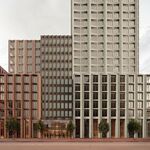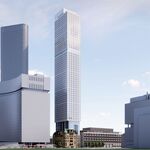Jasonzed
Senior Member
They just renovated the façade of the strip mall so it will be around for awhile
Because it won't always be a reliable revenue vehicle, especially as transit is built, traffic increases, and density increases. Remove a lane of traffic along Hurontario for LRT, and you've instantly shrunk their market by increasing travel times for those in cars. The value of the land taken up by parking will be quite a bit of incentive to property owners to re-develop their properties, or sell them off to developers for a large sum.
Sure there are some areas where these strip malls will survive for generations, but I don't see that being the case here where the sites will have direct access to the LRT and face development pressure due to their proximity to City Centre. The landowner is going to want the best use that generates the most income, and single story retail units with massive parking lots won't cut it for long.
While you're right about how much easier it is to redevelop strip malls vs. single family homes with backyards, in practice it happens quite slowly. Most strip malls will be around for at least 50 years, judging by the many examples in the inner suburbs on streets like Eglinton or Lawrence. Once they're built, they tend to function quite well from an economic standpoint. Lots of people drive cars in the suburbs and enjoy the convenience of easy access and free parking.




